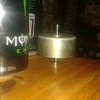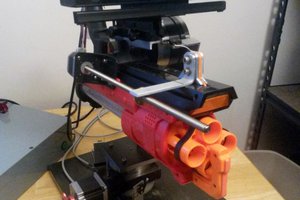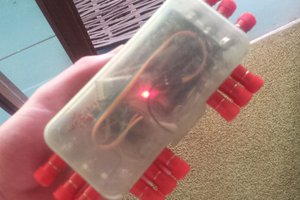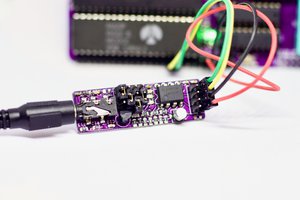I'm not much of a musician myself, but I love wiring up devices to make music. My first project used stepper motors and servos, which was fun, but it was hard for people to understand what was actually making the music. A friend had the idea of using consumer electronics to make the device more approachable for non-hackers, so I started collecting scanners from Craigslist, and it kind of took off from there. The end result is as much of a light show as it is a music performance, so what better track to use than TSO's epic Wizards in Winter, or, as this performance is known, Wizards in Printer.
The inkjet was rescued from a dusty storage closet, and the floppies were surplus from a family member's basement. A friend graciously loaned me his Arduino Mega and RAMPS board to drive everything, and some awesome people at my church volunteered their time to help record and edit the audio and video. Total cost was about $30 including pizza for the volunteers.
Technical challenges were numerous... dissecting the devices without destroying them, extending motor and light leads to reach the RAMPS board, getting all the fiddly bits of wire right (33 I/O pins!), speeding up the main loop so it could run every 40usec for decent pitch accuracy, speeding up digitalWrite(), fitting the 4000 note events in flash memory, parsing MIDI files correctly, etc. There were some creative challenges as well, such as figuring out which instruments were best suited to different parts of the music, and arranging the music to fit the instruments and increase the visual appeal and drama.
This has been an awesome project to work on, and I hope you get inspired to go forth and hack!
Credits:
Mike Anderson -- Director of Special Projects, Audio Engineer
Blue Ridge Community Church -- Location
Estrada -- Original MIDI Track
Josh Etheridge -- Director of Photography
Logan Patton -- Video Equipment
Marlin Shrock -- Arduino Equipment and Lead Scanner
Trans-Siberian Orchestra -- Making Christmas Brighter
Jeremy Weatherford -- Hacker in Chief
Fun facts:
- Old electronics sound better: the lead scanner is an ancient Visioneer, the lead guitar is an ancient and gigantic Epson inkjet. The newer scanners are much quieter and have smaller musical ranges.
- The paper feed motor at the end is playing an E along with everything else for the big finish
- The project paid for itself, since the salvaged inkjet printer had two full-sized NEMA17 stepper motors in it, which will be repurposed
- Inserting the floppy does trigger playback, but it's not reading from the floppy drive
- Floppies have to be accessed in order to detect disk insertion/removal, that's why the light is on before I inserted the disk
- This also means that removing the disk doesn't stop playback until that drive actually tries to play a note -- not quite an e-stop button
- The Epson scanner/printer was recorded by sticking a microphone inside of it, like a kick drum







 Drew Pilcher
Drew Pilcher
 johnowhitaker
johnowhitaker
 Anders Nielsen
Anders Nielsen
 shlonkin
shlonkin
This is still my all time favorite hack at hack a day.